Reloading is a meticulous endeavor fraught with potential hazards. The precision required for optimal combustion leaves little room for error. Thus, the notion of adapting reloading practices for mobility is an idea that has captured the imagination of numerous shooters—ranging from rugged outdoorsmen to military personnel. The concept of remote reloading, particularly in isolated areas, has been contemplated for generations.
Indeed, there exists a rich tradition of remote reloading, one that spans several eras. While less prevalent with modern smokeless powders, black powder reloading was frequently undertaken in the field. In those days, reloading standard firearms was a lengthy process. However, the advent of ammunition cases made the transition to modern reloading relatively seamless, as the principles remained essentially the same.
A Glimpse into the Past
In the past, hunters and marksmen evolved from loading single-shot muskets to reloading expended cartridges, while still carrying powder and projectiles with them. Tools like the 310 Tool or Ideal Tool gained traction, especially among those using lever-action rifles. These tools became as commonplace as slings and optics are on contemporary rifles, particularly for models like the Winchester and Classic Sharps rifles of that era. Multiple manufacturers produced these tools, and they marked the first significant stride towards portable reloading.
As the technology progressed and smokeless powder supplanted black powder, reloading became far more intricate—and exponentially more perilous. While black powder was relatively forgiving when reloading cased ammunition, smokeless powder demanded far greater accuracy. The variety of powder combinations and smaller caliber sizes, all containing equivalent energy, meant that reloading required a more controlled environment. This led to the inevitable rise of bench-mounted presses, which soon became indispensable in the home reloading process.
All of this to say, reloading was originally a mobile operation, conducted in hostile or remote environments where one might be far from civilization for extended periods. Transitioning from black powder muskets to cased ammunition was straightforward for hunters of that time, requiring neither advanced reading nor precise measurements. But is this kind of mobile reloading still practical today?
The Feasibility of Modern Mobile Reloading
Few today would consider bolting a reloading press to the bed of their truck—though some undoubtedly do. While it’s not inconceivable, it places undue strain on the longevity of the equipment. Similarly, it’s rare to find individuals who carry a reloading tool as part of their everyday carry kit, as hunters once did between the 1880s and 1920s. However, during the 1950s to 1970s, mobile reloading experienced a resurgence, thanks in large part to the invention of the Lee Loader. In a sense, this tool was a re-imagining of field reloading, updated for use with smokeless powder and shotgun shells. By the early 1960s, the Lee Loader expanded to include pistol and rifle cartridges, allowing shooters to reload in the field with minimal equipment. These kits were compact, lightweight, and caliber-specific.
The genius of the Lee Loader lay in its simplicity. While it might not deliver precision-grade loads, it could still produce an adequately accurate hunting round. A small powder scoop, along with clear instructions, made it easy to reload in the field without the need for additional measurement tools. There was no brass cleaning or extraneous equipment involved—just a streamlined reloading process without the need for a traditional press.
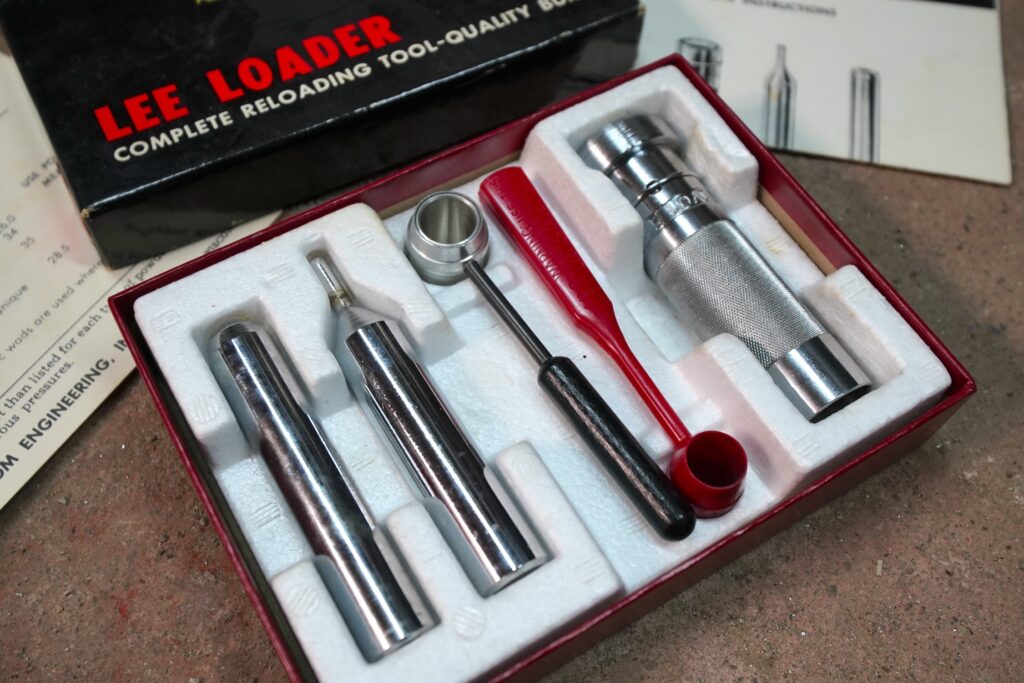
Lee Loader Close-up Shot
Advances in Reloading Technology
Lee Precision made a significant impact with the Lee Loader, and they continued to innovate by developing tools like the Hand Press. While the Lee Loader was limited to specific calibers, the Hand Press provided far greater flexibility. This muscle-powered reloading press could be used with standard die sets, eliminating the need for a bench-mounted system.
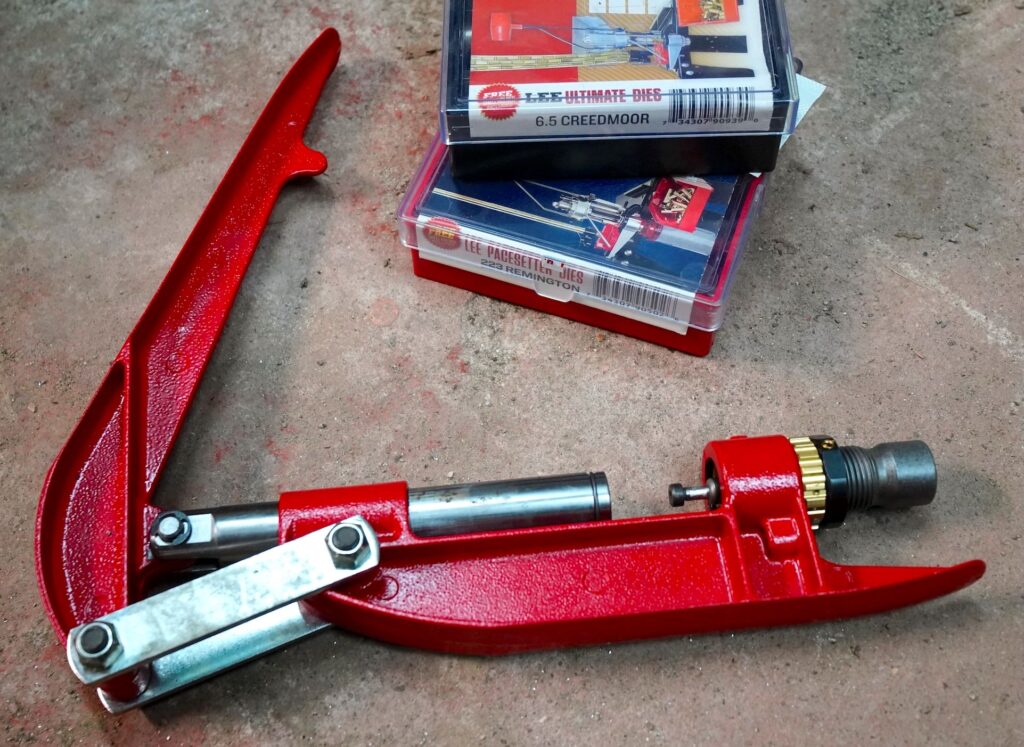
Lee Hand Press
When combined with a powder measuring tool, such as Lee’s Powder Measure Dipper Kit, this system allows for the entire reloading suite to be transported easily. With the Hand Press, not only can multiple calibers be reloaded, but numerous types of powder can also be used. This is especially beneficial for hunters setting up long-term camps or visiting cabins. The kit is compact and easy to store, and every Lee Precision die kit still includes a powder dipper and measurement guide.
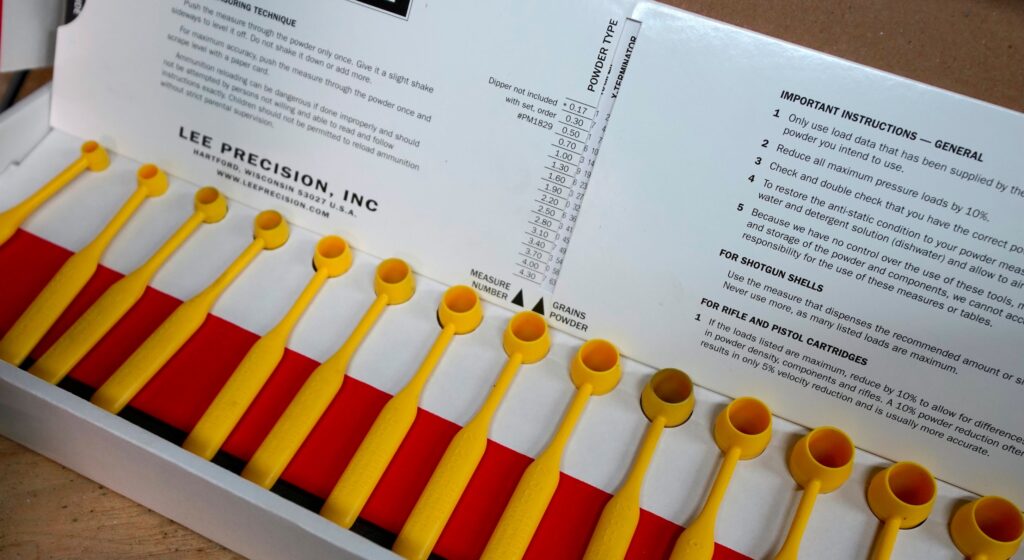
Lee Powder Measure Dip Inside
Expanding Capabilities
Another significant advancement in portable reloading is the introduction of the bench plate system. While not exclusive to Lee Precision, few companies offer a bench plate compatible with all their press models. The concept is elegant: a plate is affixed to the press, while a receiving mount is installed on the bench. This enables users to move their press between multiple locations. Though robust and somewhat cumbersome, this setup is ideal for those who want to reload from different sites using the same press.
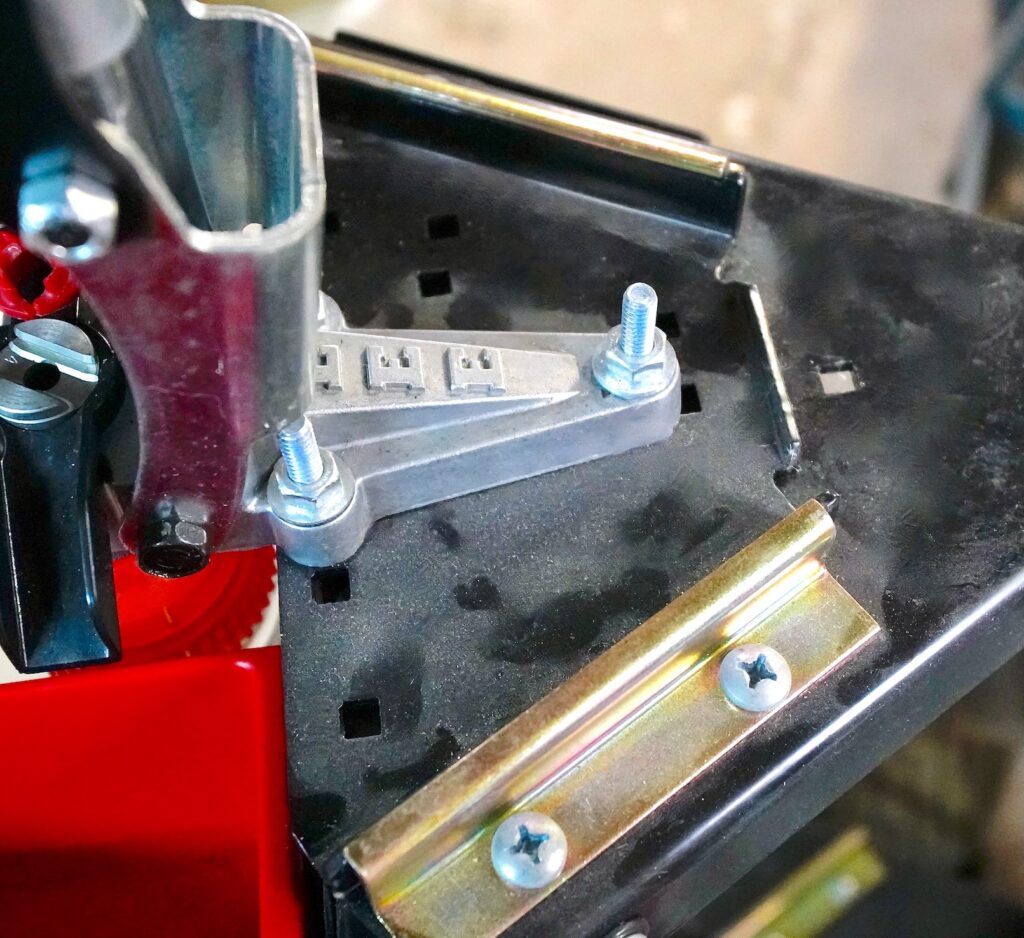
Lee Press Mounting Plate
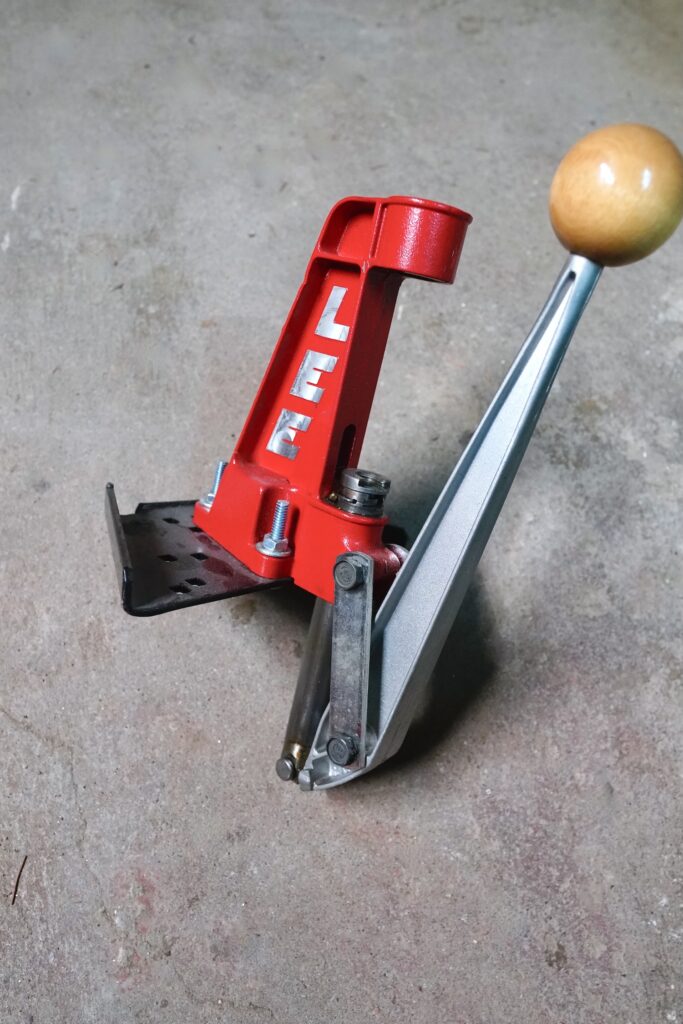
Lee Press on Mounting Plate
Reloading in Compact Spaces
Small reloading tools have gained favor not only for field use but also for those dealing with space constraints. The Lee Load Stand, for example, utilizes the bench plate system but offers greater portability. It can be disassembled and relocated with ease, providing space for additional presses or case-preparation machines. Many enthusiasts have adapted the Lee Load Stand for use in RVs or smaller trailers, where space is at a premium.
This configuration supports all types of presses, from single-stage to progressive models, and can be stored away discreetly when not in use.
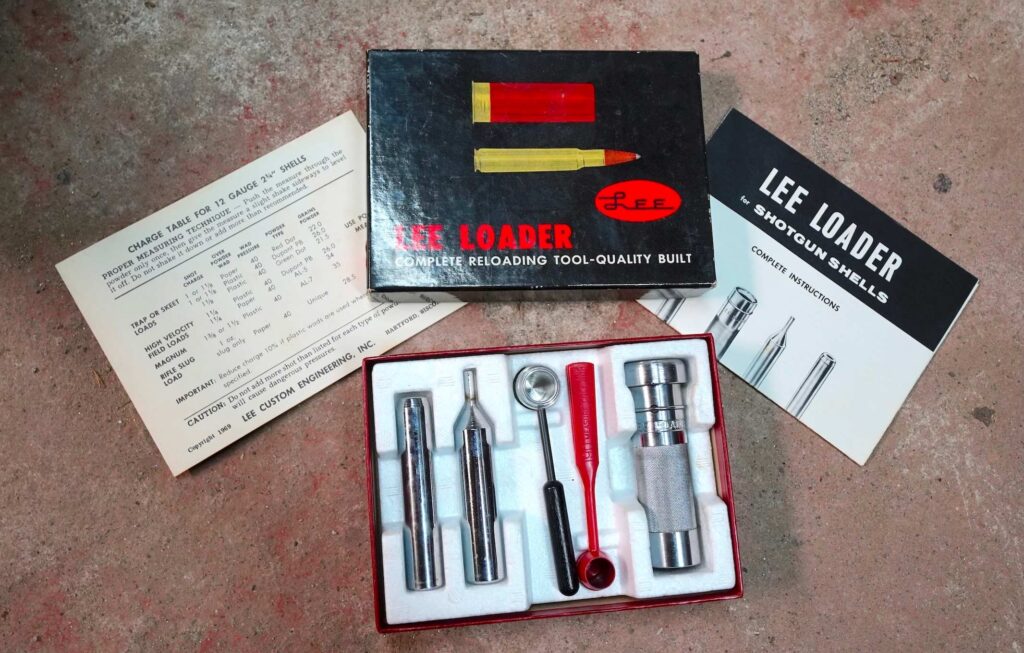
Lee Loader Overview
What’s the Best Solution Today?
Each individual’s reloading needs are unique, but certain principles remain universal. Whether one seeks to reload in the wilderness or to relocate a stationary press, the goal is adaptability. For myself, it’s about having the capacity to reload wherever I am if my stationary press isn’t accessible. For the bushcrafter or hunter, a basic Lee Loader might suffice. A small supply of primers, powder, and projectiles can ensure that meals remain on the table.
For the homesteader or retiree with a summer cabin, being able to transport a press between locations may be the priority. It’s not about an immediate need, but about being prepared when supplies dwindle. For those living in more confined spaces, such as truckers or apartment dwellers, a more robust setup may be required. Even with limited space, a stationary press doesn’t have to mean limited options.
Additional Alternatives
At present, Lee Precision provides the most comprehensive range of mobile reloading solutions. However, there are alternative options, including antique hand loaders or reproductions of the Ideal Tool/Lyman 310 Tool, which can still be found online. For those inclined toward DIY projects, many have created custom containers to store and transport their press and equipment.
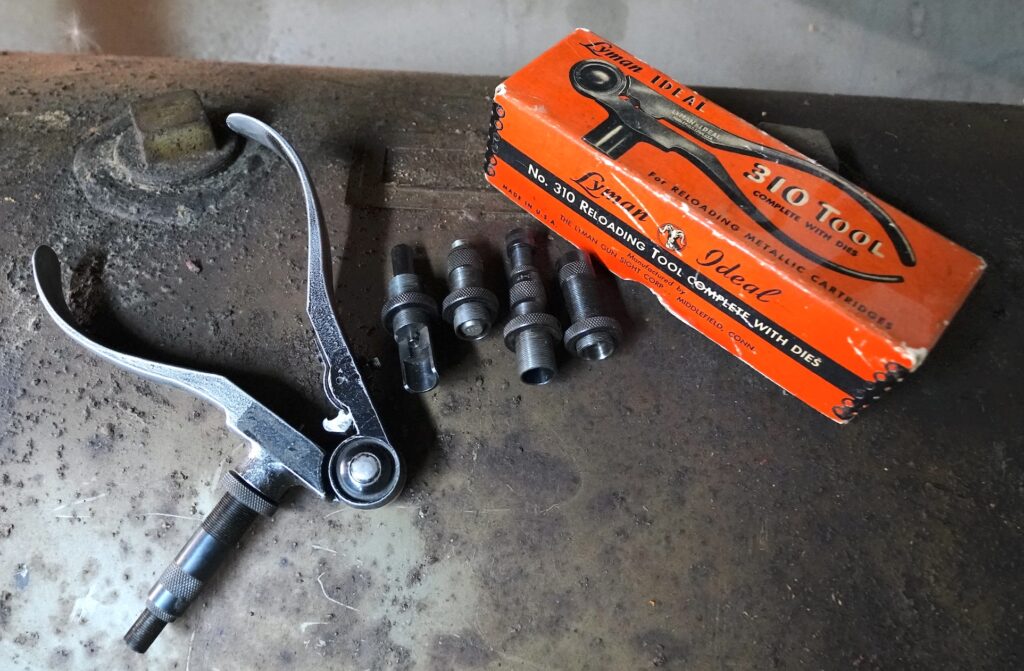
Lyman 310 Overview
While a DIY approach may suit some, Lee Precision’s solutions remain a cost-effective and reliable choice, honed over 140 years of innovation. It may not be the ideal solution for everyone, but it has proven its value for countless reloaders over the decades. Don’t hesitate to share your own ideas and find what works best for your individual needs.








